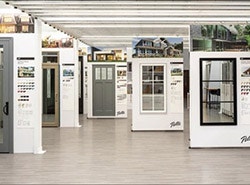Comprehensive Guide to Types of Basement Windows for Safety and Style
Explore the best types of basement windows for safety and natural light.
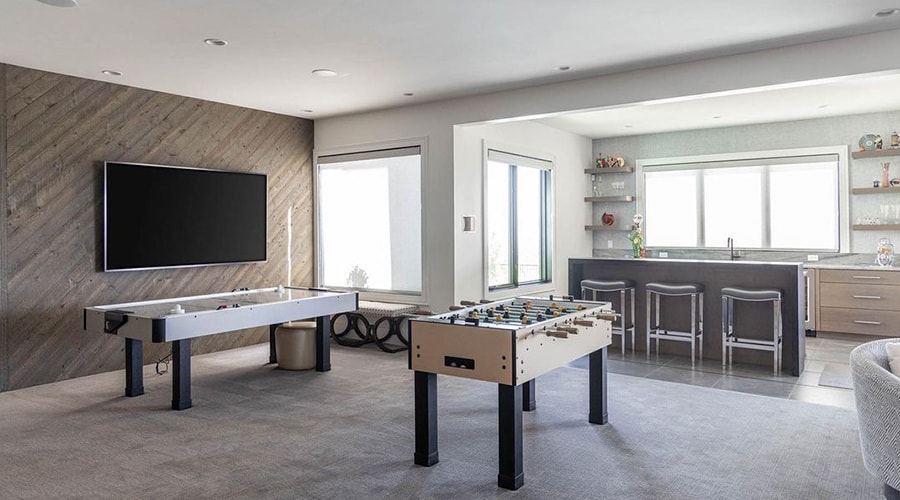
KEY TAKEAWAYS
- Basement windows enhance natural light, ventilation and safety, making lower-level spaces more usable and inviting.
- Egress windows are essential for safety and code compliance, while daylight and walkout windows improve aesthetics and indoor-outdoor flow.
- Energy-efficient materials and proper installation can reduce utility costs and increase home value.
Basements sometimes have a reputation for being dark and unwelcoming, even though they have the potential to serve as functional, versatile spaces. The extra area in a lower level can accommodate various needs, from storage and utilities to home offices, personal gyms and additional bedrooms. In fact, recent trends show that new construction homes are moving away from formal living areas and towards multi-purpose flex spaces. A basement is the perfect place to bring this trend to life. Fortunately, several window options can help brighten your basement and transform it into a practical, inviting space that people want to use. In this article, we'll explore the different types of basement windows: egress windows, daylight windows and walkout windows.
Why Basement Windows Matter
Basement windows are essential for transforming below-grade spaces into comfortable, livable areas. They allow natural light to filter in, brightening what can often feel like a dark and enclosed space. Improved ventilation is another key benefit, as operable windows help regulate airflow, reduce moisture buildup, and prevent musty odors. From a safety standpoint, egress windows provide a vital emergency escape route, meeting building code requirements for habitable basement rooms like bedrooms and home offices. Beyond functionality, well-designed basement windows can also boost a home’s aesthetic appeal and resale value, making lower-level spaces feel more like an extension of the main living area rather than an afterthought. Whether you're finishing a basement for additional living space or simply enhancing an existing one, the right windows can make a significant difference in both comfort and usability.
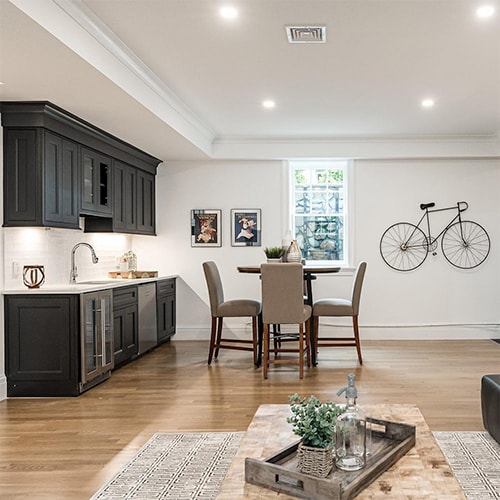
1. Egress Windows: Prioritizing Safety
Egress windows can be located below ground level and have a window well outside with steps or a ladder to allow exit or entry in emergencies. Safety is the primary purpose of these windows, which is why they are typically larger than other basement windows. Local building codes mandate a minimum opening size in finished basements that have bedrooms or living areas. That’s why casement windows and sliding windows, which have large openings, are common window types for egress applications.
When considering egress window installation, it's essential to comply with local codes, and we recommend working with a professional to ensure the windows are correctly installed to meet safety standards. Not only are egress windows a crucial safety feature, but they are also a great source of natural light and can increase the value of a home by creating an additional bedroom. They can transform a dark and drab room into one that is bright and welcoming. Homeowners often say that the addition of even one egress window makes their basement much more usable and functional.
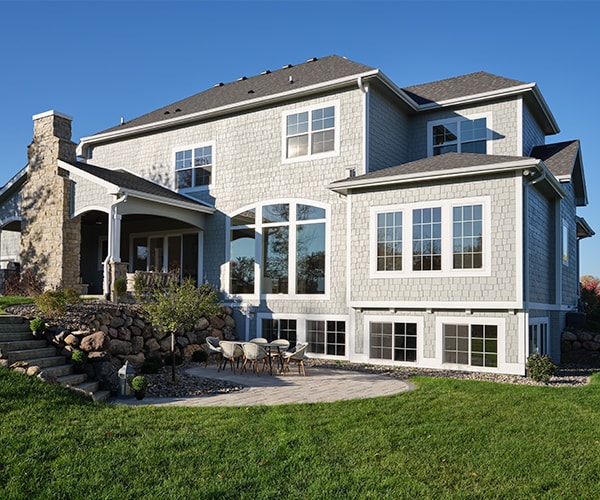
2. Daylight Windows: Welcoming Natural Light
Daylight windows are a fantastic way to brighten up your basement without the need for egress. These windows are typically smaller than egress windows, as exit and entry are not the intent, but they still provide a significant amount of natural light. Daylight windows are often placed high on basement walls, near the ceiling and at ground level, to allow sunlight into the space. The high placement of daylight windows means they offer privacy without compromising on natural light. Although not designed for entry and exit, some daylight windows, like awning windows, can be opened to welcome fresh air into the basement. This can help circulate air and freshen up musty smells.
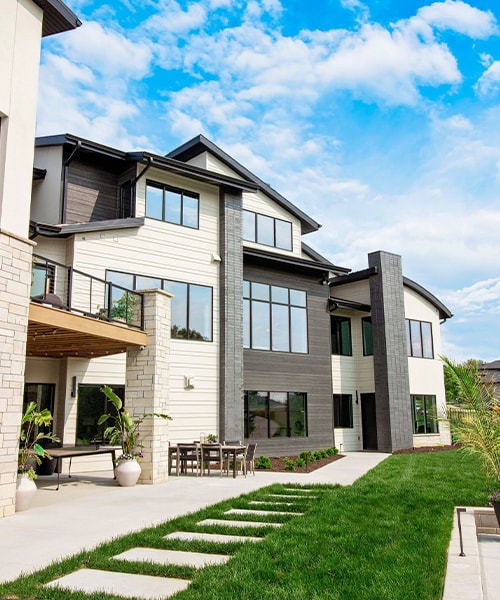
3. Walkout Windows: Blending Basement and Backyard
As the name suggests, walkout windows offer a convenient walkout or access point between the basement and exterior. They are typically installed in basements that are located on sloped terrain or raised foundations, meaning the windows are fully above ground level. Large picture windows, casement windows, or sliding windows are all typical in walkout basement applications. These windows not only offer ample natural light but also create a seamless connection between your basement and yard. They can turn a basement into a versatile entertaining space, and adding basement patio doors can further enhance the indoor-outdoor flow. Walkout windows are coveted for the way they improve aesthetics by making basement lighting feel no different than upper-level living.
4. Replacing Glass Block Windows: Maintaining Privacy
Many older homes have glass block windows because basement living wasn’t as popular, and egress windows weren’t required at the time. These consist of individual glass blocks or bricks, which are mortared together to form a window. These windows commonly feature frosted glass to maintain privacy while still allowing some natural light to filter through. They are no longer recommended today because egress is essential to safety in basements. If you’re working on a basement window replacement project and want to maintain the privacy afforded by your old glass blocks, keep in mind that we offer windows with frosted or decorative glass. Replacing old glass blocks with egress windows achieves a similar end goal in terms of privacy and light but offers improved safety in an emergency situation.
Installation and Maintenance Tips
Proper installation is key to ensuring basement windows perform efficiently and last for years. Hiring a professional ensures that windows are sealed correctly to prevent moisture issues and drafts. Regular maintenance, such as cleaning window tracks, inspecting seals for leaks and checking for signs of condensation, can help extend the lifespan of your basement windows. Additionally, installing window well covers can help keep debris and water from accumulating in basement window wells.
Energy Efficiency of Basement Windows
Choosing the right basement windows not only impacts safety and aesthetics but also plays a crucial role in energy efficiency. Different window materials and designs can significantly affect insulation and energy costs. Double- or triple-pane glass with argon gas fill can help reduce heat loss, making basements more comfortable year-round. Vinyl and fiberglass window frames provide superior insulation compared to aluminum frames, reducing drafts and helping maintain a consistent indoor temperature. Investing in energy-efficient basement windows can lead to lower utility bills and contribute to a more sustainable home.
Common Basement Window Sizes
Basement windows come in a variety of standard sizes, and selecting the right dimensions depends on the window type and the intended purpose. Here are some typical basement window sizes:
- Egress Windows: Must have an opening width of at least 20 inches and a height of at least 24 inches.
- Daylight Windows: Generally 12-36 inches wide and 12-24 inches high, depending on placement.
- Walkout Windows: Can range from small casement windows to large sliding or picture windows, often 36-72 inches wide.
Understanding these common dimensions can help homeowners choose the right basement windows for their space while ensuring compliance with building codes.
When choosing the right type of basement windows for your home, consider your specific needs and local building codes. Egress windows are essential for safety in finished living spaces, while walkout windows offer convenient access to the outdoors. Daylight windows and frosted windows can add character and functionality without compromising privacy or security. Energy-efficient options can enhance comfort and reduce costs, and proper installation and maintenance ensure longevity.
Basement windows can make your lower-level space a brighter, safer and more functional part of your home. Get in touch with a local Pella professional to talk about how windows could enhance your basement living space.
